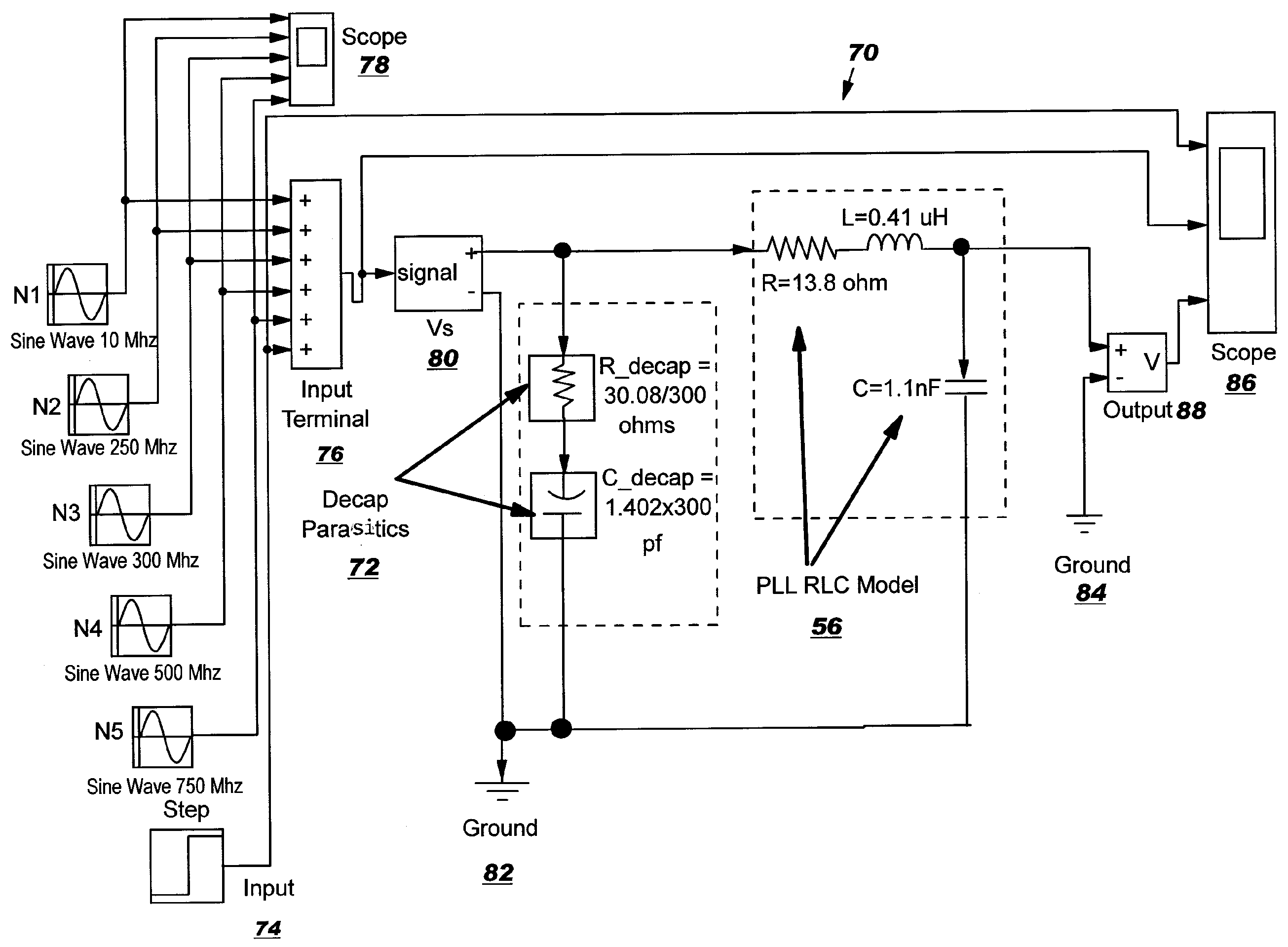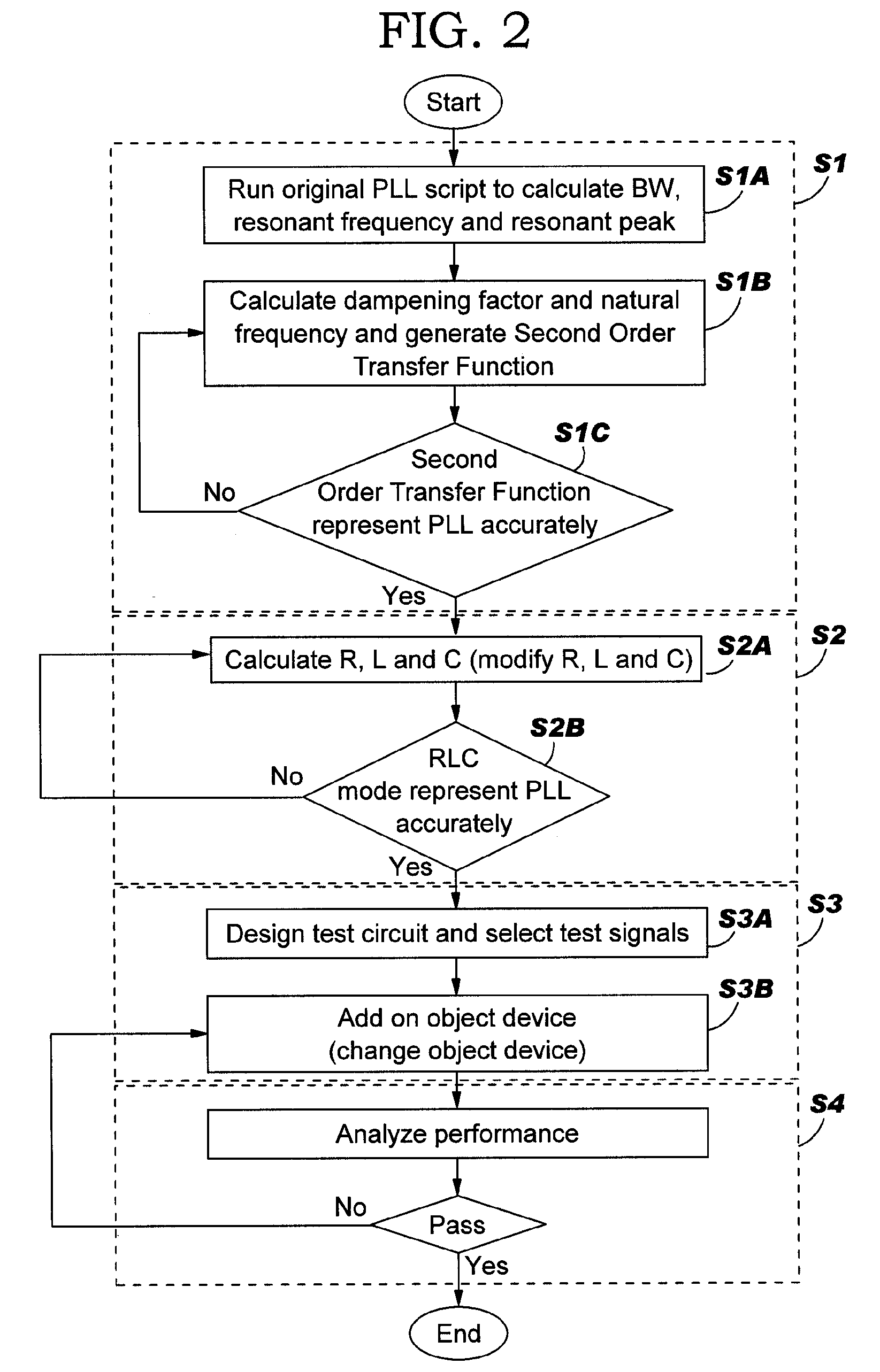Performance measurement of device dedicated to phase locked loop using second order system approximation
a technology of performance measurement and phase lock loop, which is applied in the direction of resistance/reactance/impedence, instruments, frequency to phase shift conversion, etc., can solve the problems of inconvenient design of a device dedicated to a pll, degradation of pll performance, and complicated design
- Summary
- Abstract
- Description
- Claims
- Application Information
AI Technical Summary
Benefits of technology
Problems solved by technology
Method used
Image
Examples
Embodiment Construction
[0024]With reference to the accompanying drawings, FIG. 1 is a block diagram of a phase locked loop device performance measurement system 10 in accordance with the invention. Measuring system 10 preferably includes a memory 12, a processing unit (PU) 14, input / output devices (I / O) 16 and a bus 18. A database 20 may also be provided for storage of data relative to processing tasks. Memory 12 preferably includes a program product 22 that, when executed by PU 14, comprises various functional capabilities described in further detail below. Memory 12 (and database 20) may comprise any known type of data storage system and / or transmission media, including magnetic media, optical media, random access memory (RAM), read only memory (ROM), a data object, etc. Moreover, memory 12 (and database 20) may reside at a single physical location comprising one or more types of data storage, or be distributed across a plurality of physical systems. PU 14 may likewise comprise a single processing unit,...
PUM
 Login to View More
Login to View More Abstract
Description
Claims
Application Information
 Login to View More
Login to View More - R&D
- Intellectual Property
- Life Sciences
- Materials
- Tech Scout
- Unparalleled Data Quality
- Higher Quality Content
- 60% Fewer Hallucinations
Browse by: Latest US Patents, China's latest patents, Technical Efficacy Thesaurus, Application Domain, Technology Topic, Popular Technical Reports.
© 2025 PatSnap. All rights reserved.Legal|Privacy policy|Modern Slavery Act Transparency Statement|Sitemap|About US| Contact US: help@patsnap.com



